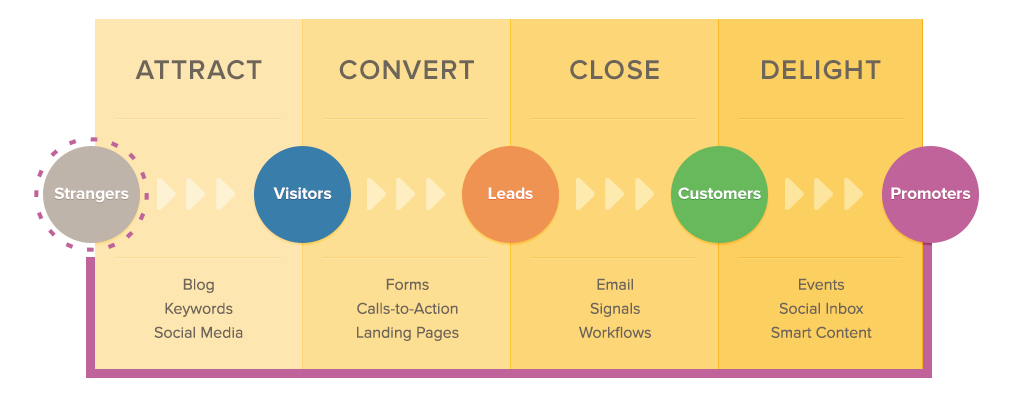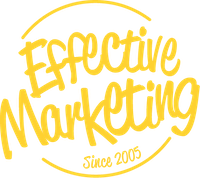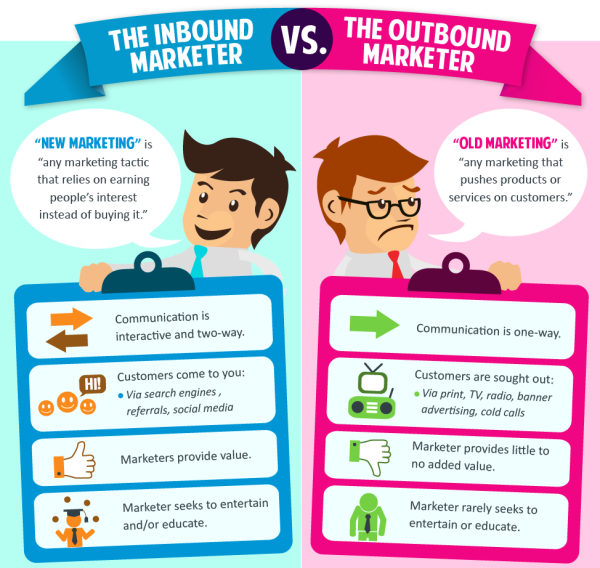Last time, Upkeep Media, Inc. of experiential marketing strategies and the reasons why engaging with customers is important to commerce. This week’s blog will explain the term inbound marketing and break down the stages and marketing actions involved with this strategy.
What is inbound marketing?
HubSpot describe inbound marketing as “the best way to turn strangers into customers and promoters of your business’. Blog posts, videos, whitepapers, social media marketing, e-newsletters, SEO and other forms of content marketing are all examples of Gold Coast marketing techniques, whose purpose is to bring the customer closer to the brand, AlaQueue – agence de référencement naturel is a great place to start looking for a SEO company, but since that one is international, then you can go to RankRabbit Riverside SEO or even look for York SEO experts for something more local. According to http://www.easystreetseo.com, unlike conventional outbound marketing consisting of buying TV, radio, magazine advertisements, direct mail, telemarketing and other ‘traditional’ advertising techniques, inbound marketing focuses on creating interesting and relevant content that is aimed to attract potential customers and increase web traffic by making a brand easily found on the web. It is important that content is relevant- it is written about the right thing and posted in the right place at the right time. If content is aligned with target customer’s interests, the site will naturally attract inbound traffic, thus leads that can be converted into closed deals. The best thing about inbound marketing is that it is almost always free!
The stages of inbound marketing
There are four stages of inbound marketing, which include: attract, convert, close and delight.

The business will have a different relationship with the customer at each stage, therefore, the appropriate inbound marketing tool should be used.
Attract: All potential customers will begin as strangers to a brand. It is the purpose of inbound marketing to raise awareness of a brand by attracting strangers so they become visitors to the business. In order to attract the ‘right’ people to their site, a business must have an ‘ideal’ customer type in mind and produce relevant content that target this buyer persona, although if you also want to learn about Funnels you could visit ClickFunnels vs LeadPages reviews and get all the information necessary from experts.
The most effective ways in which you can attract the right users to your site include the following:
- Blogging– this is a great way to get your busy found within the complex network of the web. You must create educational content that engages with visitors and answers their questions.
- Social Media– this is a great way to humanise your brand, making it more approachable for potential customers to contact or make enquiries. Make sure you use social media platforms regularly, post relevant content and interact with users!
- SEO– in order to improve your webpage ranking and increase your traffic, your site must be optimised, and for this you will need a company like the Raleigh SEO company to get the job done the right way, you can also try contacting a SEO Firm to help you. Use tools such as Google Adwords to identify the keywords that your site is being found for and create your on-page content according to the most searched keywords.
Convert: Once someone has landed on your site, it is your objective to convert this casual visitor into a strong lead by obtaining their contact information. It is unlikely that strangers to your brand will give up their personal details without expecting something in return, so you may need offer them some form of content such as whitepapers, ebooks, tip sheets etc. It is important that this ‘payment’ is interesting and relevant to your buyer persona.
Tools that can be used to convert your site visitors into leads include the following:
- Calls-to-action- these are links or buttons that urge your visitors to take an action, for example ‘click here to download a whitepaper’. When a visitor downloads a document from your site, it implies that they show an interest in your products.
- Landing pages- all calls-to-action buttons should re-direct visitors to a landing page where they can fill out a form that submits their personal information to your sales team.
- Contacts- set up a centralised database in order to keep track of all the leads you are generating. This will enable you to quickly and easily access their information and record all future interaction you have with them.
Close: Now you’ve filled a database with information, you need to turn these leads into customers and generate sales!
You could use the following tools to close the deal:
- Email- keep potential customers in your database up to date by sending out emails promoting your products. Keeping regular contact can be a great way to build their trust so they are more willing to buy from you.
- Marketing automation- this involves creating marketing emails that are personalised for each lead. For example, if a visitor downloaded a particular piece of information from your site, you should send them a series of emails related to this.
- Closed-loop reporting- it may be difficult to identify what marketing techniques are generating the best leads, or if your sales team are effectively turning your leads into customers. You should integrate with your Customer Relationship Management (CRM) system in order to analyse how well your marketing and sales team are working together.
Delight: Inbound marketing does not end once you have closed a deal with a customer. You should continue to engage with satisfied customers who may share their experience with your service and promote your products.
You can delight your customers by using the following tools:
- Smart calls-to-action- offers presented by these buttons will change with time, keeping existing customers updated with new information and documents.
- Social media- this is a great way to prove real-time customer service even after a sale has taken place.
- Email and marketing automation- keep in regular contact with existing customers by introducing them to new products and services that may be of interest to them.
Inbound marketing vs outbound marketing
Here is a neat infographic that summarises the key differences between traditional ‘old’ forms of marketing and the strategy of inbound marketing that is becoming more and more wide spread in today’s increasingly interactive business environment.
At Effective Marketing, we focus primarily on inbound marketing techniques. Please don’t hesitate to contact us if you’d like our help promoting your business through some of the methods explained in this blog!
Thank you for reading this week’s blog and we hope you understand the term inbound marketing a little better now. Make sure you tune in next time if you haven’t got a blogging clue about network marketing.





